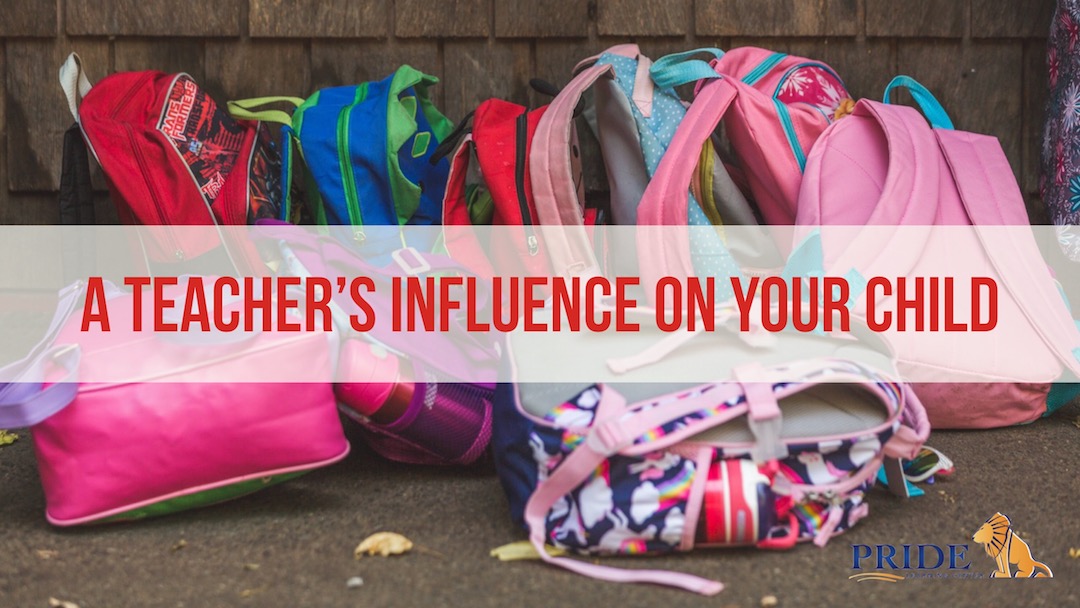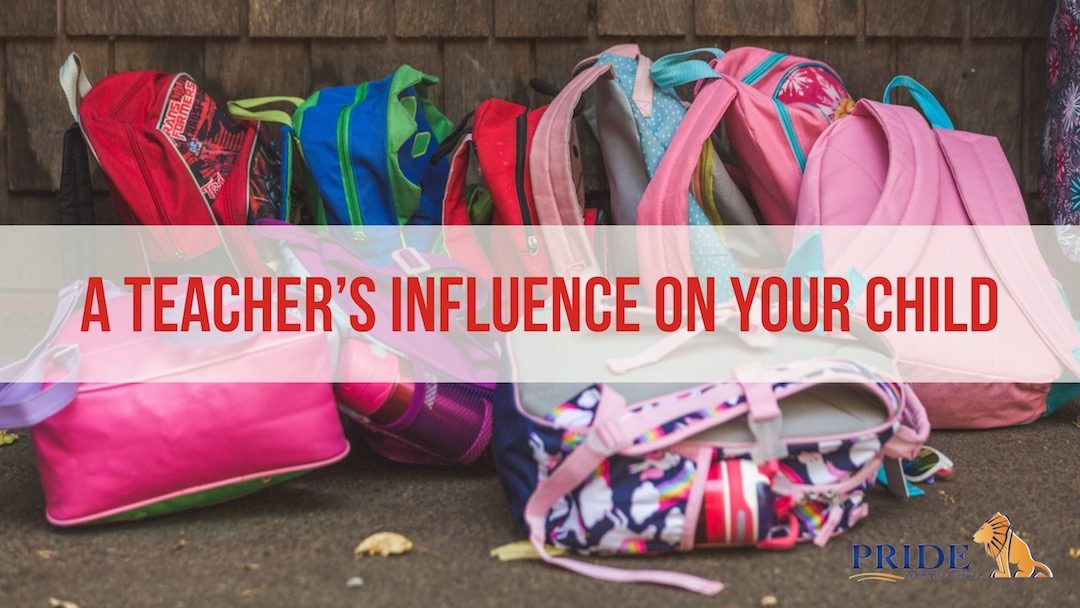
by PRIDE Reading Program Admin | Nov 8, 2017 | A PRIDE Post, Student Motivation
Education is an important tool that can shape an individual and allow creativity, opportunity and growth. As a teacher, it is necessary to motivate students and help them recognize their strengths and weaknesses. Educators are important role models for students and have a big impact on helping shape, create, support and establish students’ strengths, goals and knowledge. Therefore, it is essential to be aware of the effective qualities, skills and characteristics that one brings into a learning environment and how teacher influence plays a role.
What Makes an Effective Teacher?
According to research teacher preparation and knowledge of teaching and learning, experience, subject matter knowledge and certification all establish teacher effectiveness. Teacher preparation is important to their effectiveness in a classroom. Good quality teacher preparation is important to student academic achievement. Prepared graduates have a higher likelihood of remaining teachers and providing quality service to their students and to the schools they work in which creates a positive teacher influence overall.
What is Teacher-Efficacy?
Teacher-efficacy is a teacher’s confidence in their ability to help students to learn. Research shows that teacher-efficacy has an effect on his or her students’ academic performance. It is important that teachers believe in themselves and in their abilities as a role model and educator, because it plays an important role on their student’s self-perception and performance. It also helps a teacher influence and communicate more effectively with students as well as with the overall perception of their student’s strengths and weaknesses. Teachers with self-efficacy have a positive impact on their students’ academic performance. It is something that all teachers need to build, because it is believed to have an important role on students’ academic performance.
“Do teachers’ expectations of his or her students have an impact on students’ academic performance?”
Student learning can be positively impacted by the encouragement of teachers to their students. A teacher’s influence, ideas and expectations of his or her students’ capabilities have an effect on student academic performance and achievements. If teachers believe in their students, their students begin to believe in themselves. Students take into effect the beliefs their teachers have on them and accept it as part of who they are and their abilities. When students are viewed in a negative way by their teachers such as, being lazy, unmotivated and having no abilities, they take on those beliefs about themselves. Many teachers may not be aware of their actions towards particular students in the classroom but their students become aware of them. According to research finding, teachers’ beliefs translate into differential behavior toward their students. For example, teachers who see particular students as highly motivated and highly capable would often make eye contact, smile and lean toward them, and praise and call on them more frequently.
“Does teacher motivation affect student performance?”
Motivation in infants and young children is very high. Infants and young children have a big interest in their surroundings and environment. Unfortunately, as young children get older, they become less interested and enthusiastic about their surrounding and environment. Learning about their environment seems like an unwanted task and desire.
Student motivation is the desire and interest that a student has to be involved in their learning environment. There are reasons that affect student motivation. For example, an intrinsically motivated student looks at the learning activity as an enjoyable process and gets great satisfaction through the process of learning. A student who is extrinsically motivated looks at the learning activity as something they have to do so that they can get a reward or not be punished.
It is also believed that motivation to learn is determined or affected by modeled behavior and communication of parents and teachers. Children develop an idea about learning in their home setting. Children are given a particular message from their homes based on their parents’ encouragement of exploring their world compared to children who are given the encouragement to explore the world around them. Therefore, children without an encouraging and supportive home setting are less likely to deal with and handle failure, because of their feelings about no self-worth or competence.
Older children have a harder time accepting failure and seeing the positive side of trying to accomplish a goal, whereas, younger children see failure as a positive step to finishing or reaching a goal. Teachers’ influence and expectations of students also play a big role in motivation of student. The rules and goals also play an important role on the thoughts and beliefs of the students. It is important for teachers to view themselves as being able to stimulate student motivation to learn.
Tasks given to students can help increase motivation by being challenging and achievable, and showing students that the skills involved in a task can be used in the real world. Verbally providing the reasons for the tasks to students is also helpful. According to research there is a process called Attribution Retraining that includes modeling, socialization and practice exercises and is sometimes used with discouraged students. Attribution retraining provides students with focus on a task rather than the fear of failure.
Karen Oquendo, M.S. is the Learning Specialist at St. James Episcopal School in Los Angeles. Karen is a Credentialed Special Education Teacher and Reading Specialist. Prior to working at St. James, Karen worked as a Reading Specialist at PRIDE Learning Centers and also as a Special Education Therapist for New York City Department of Education. You can visit the PRIDE Learning Center website at www.pridelearningcenter.com.
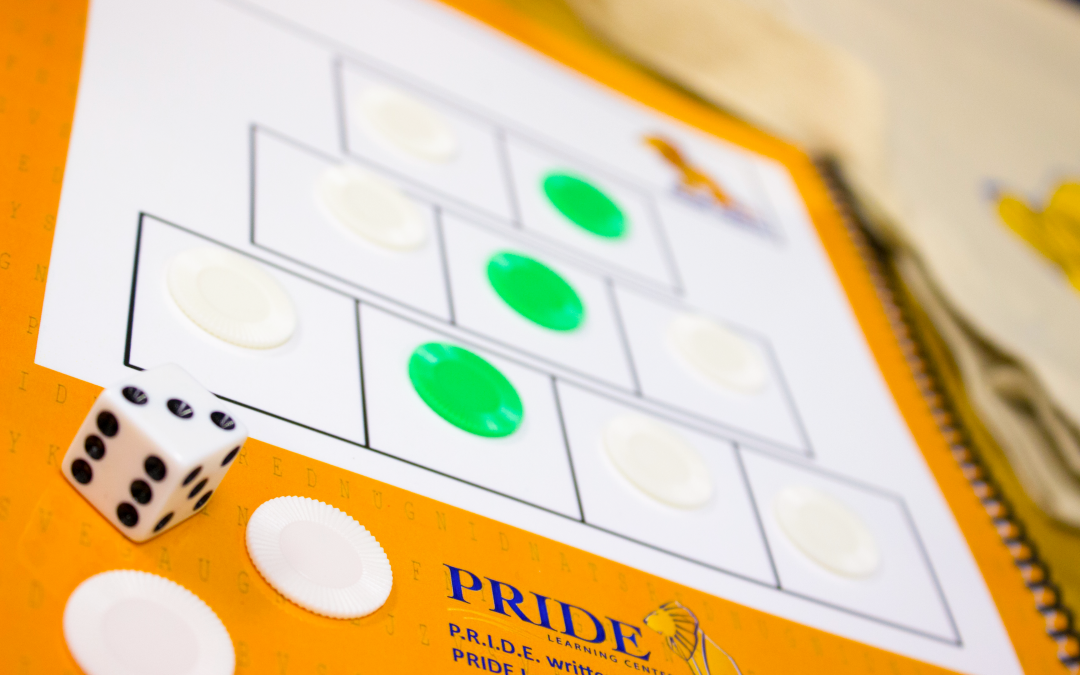
by PRIDE Reading Program Admin | Nov 6, 2017 | A PRIDE Post, Phonological Awareness, Reading Skills
To be ready to read, a child not only needs to know the letters of the alphabet but also must be aware that his or her own speech is made up of segments that differ from letters. These segments are called phonemes. I will try not to use too much teacher jargon in this blog, but this term is worth learning because it is critical to understanding reading and phonemic awareness. Without phonemic awareness, a child cannot read.
What is Phonemic Awareness
Phonemic awareness is the ability to identify and manipulate the individual speech sounds into spoken words. For example the word cat has three sounds – /c/, /ă/ and /t/. The word heat also has three sound /h/, /ē/, /t/ because the letters ea make one sound. Words can be divided into several other units such as syllables and rhymes. The smallest unit of sound in our language is a phoneme and there are forty four of them!
Phonemes do not correspond one-to-one with letters because some sounds are represented with two letters, like sh, ch, th and ng. The awareness of the separate sounds in a word is what we call phonemic awareness. It is an auditory skill that underlies the ability to use an alphabet to read and write. A child who can recognize that the word cat has three speech sounds, the word eye has one, and the word eat has two, possesses basic phonemic awareness.
If a child can change the /m/ sound at the beginning of the word mat to /r/ and know that the word is now rat, has demonstrated an even larger degree of phonemic awareness. This child can compare the sounds in words, substitute a new sound for an old one, and blend the sounds to make a new word.
Phonemic Awareness Activities
When I developed the PRIDE Reading Program, I made extra sure that every single lesson and skill the students learn also include phonemic awareness activities. A few examples of what the students have to do in the PRIDE Reading Program:
Identify rhymes – “tell me all of the words you know that rhyme with the word “heel.”
Listening for sounds – “close your eyes as I read some words to you. When you hear the “ū” sound, raise your hand.”
Manipulating sounds in words by adding, deleting or substituting – “in the word LAND, change the L to H.” (hand)
On the back cover of each of the Student’s Workbook there is a set of Elkonin Boxes to help the students build phonemic awareness. The students are instructed to listen to a word and then move the sound tokens into a box for each sound in the word.
As the students progress in the PRIDE program, they eventually break the words apart into syllables, and separate the syllables into sounds.
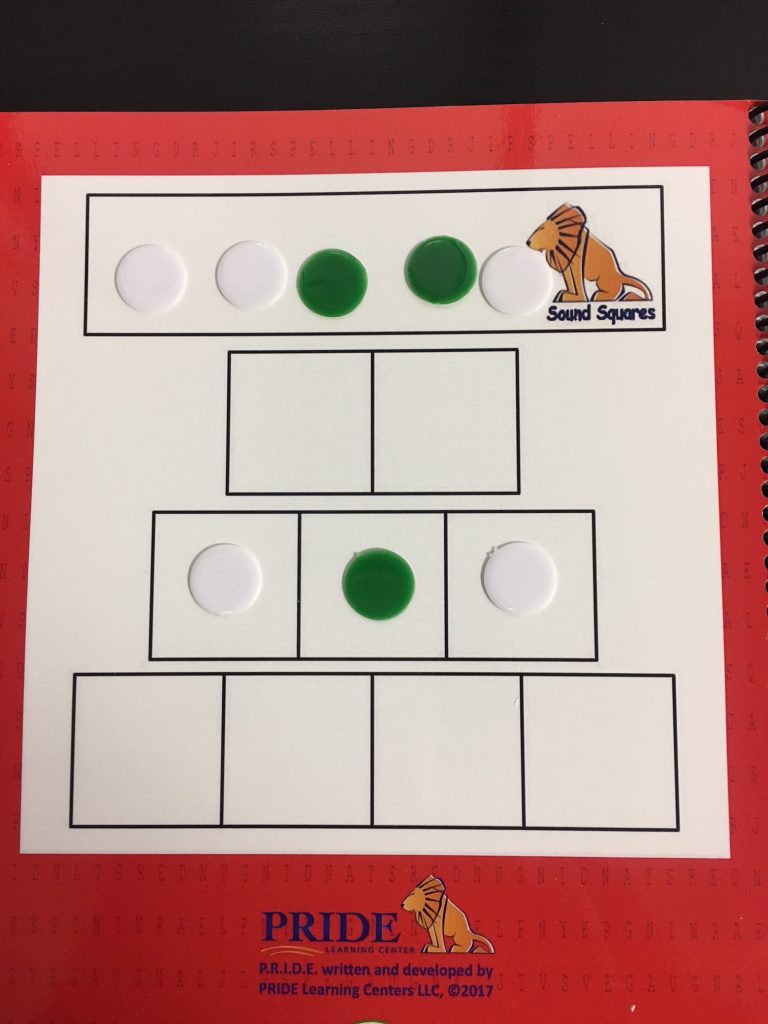
Success in reading depends on basic phonemic awareness. Without a sense of the sounds that letters represent, the child approaches reading as just memorizing letters. With phonemic awareness, the child can link letters to the sounds in words in order to decipher and spell them. Phonics is an approach to teaching reading in which the child is taught to associate letters with sounds and to use that knowledge to sound words out by blending the sounds from left to right.
It has been well known by researchers for the last 20 years that phonemic awareness and letter knowledge are the two best predictors of how well a child will learn to read during his or her first few years of school. The National Reading Panel’s report confirmed that instruction in phonemic awareness helps children learn early reading skills.
Phonemic Awareness in Action!
Here is a sample video of me teaching a student phonemic awareness with Elkonin Boxes:
Karina Richland, M.A., developed the PRIDE Reading Program, an Orton-Gillingham program for struggling readers, based on her extensive experience working with children with learning differences over the past 30 years. She has been a teacher, educational consultant and the Executive Director of PRIDE Learning Centers in Southern California. For more information, visit the PRIDE Reading Program website here. You can also reach her by email at info@pridelearningcenter.com

by PRIDE Reading Program Admin | Oct 30, 2017 | A PRIDE Post, Spelling

My favorite part about teaching spelling with the PRIDE Reading Program is using the Letter Tiles. Each spelling lesson is multisensory since the kids are using both their visual and their kinesthetic modalities moving the tiles around to build words. Spelling with letter tiles is fun, interactive and engaging.
What are Letter Tiles?
In the PRIDE Reading Program, the Letter Tiles are those tiny color-coded squares that have each phoneme of the English language printed on them. They are used by the students when practicing a new concept or skill. The kids are given 10 words to build with their tiles. They say the word, bring down each sound they hear in the word and then blend the sounds together to read the word. Spelling with letter tiles is a step-by-step process.
Why use Letter Tiles?
Because each Letter Tile is a different color, it helps the kids visualize the more abstract concepts. In the PRIDE Reading Program, the consonants are all white, the vowels are all green. Therefore, when the kids are building words, the vowels really stick out. It also gives the kids a visual of manipulating each sound in isolation to create words as well as break apart syllables. For kids that are “hands on” learners, spelling with Letter Tiles are very helpful in building lasting memories to help make those difficult concepts (like learning the ea ) really “stick.”
How do Letter Tiles Work?
You have the option of placing the Letter Tiles in alphabetical order on a table or flat surface, or you can put magnets on the back of them and place them on a magnet board. I use both ways with my students in our Orton-Gillingham tutoring sessions, and the kids don’t seem to have a preference one way or the other.
In the PRIDE Reading Program, the letter tiles are used in every Practice Lesson and every Reinforcement Lesson. So, the kids are given plenty of opportunities to practice their new skills and also review their previously learned skills. Here is a sample video of me teaching a student spelling with Letter Tiles – it’s really short and quick, but gives you an overview.
Letter Tiles are a fantastic learning tool that helps kids learn to apply and use their spelling rules quickly and with accuracy. They are the perfect multisensory, fun and hands-on activity for kids taht are visual and kinesthetic learners. Do you use Letter Tiles in your spelling and reading lessons? If yes, please feel free to share what and how you do with with all of us! We welcome your feedback!
Karina Richland, M.A., is the author of the PRIDE Reading Program, a multisensory Orton-Gillingham reading, writing and comprehension curriculum that is available worldwide for parents, tutors, teachers and homeschoolers of struggling readers. Karina has an extensive background in working with students of all ages and various learning modalities. She has spent many years researching learning differences and differentiated teaching practices. You can reach her @ info@pridereadingprogram.com or visit the website at www.pridereadingprogram.com
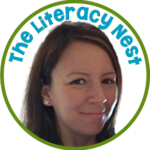
by PRIDE Reading Program Admin | Oct 24, 2017 | A PRIDE Post, Articles & Resources
As a very special October treat, we have guest blogger Emily Gibbons from the Literacy Nest to share some really helpful and practical tips teaching long and difficult words to struggling readers. THANK YOU Emily, for writing such a great post for our PRIDE readers!
How do you help your students read and spell multisyllabic words effectively?
We all know how critical it is to learn how to read and spell strategically for better accuracy, fluency, vocabulary development and overall comprehension. Providing effective strategies for reading and spelling multisyllabic words gives students the foundation they need to become successful readers.
One reason many students get hung up on reading is that they get stumped on longer or harder words they can’t understand. Teaching them a process for working through multisyllabic words instead of offering ineffective techniques like guessing or looking at a picture, will empower them to read through text with ease.
Here are some tips for reading multisyllabic words effectively if they find themselves stuck. You will want to have some post-its, or access to a small white board.
- Have them locate and see if they can identify the vowel graphemes in the word by underlining them. (Vowel teams are one sound).
- Box any familiar suffixes.
- Circle familiar prefixes.
- Use knowledge of syllables to decode the vowel sounds.
- Say the whole word and see if it makes sense.
- Use a pencil to scoop under each syllable, blending left to right.
- Check the context for clarification. Does it make sense?
Practice these steps with your students. It will help them when they need to do it on their own. Again, you’re creating a foundation for a love of reading that they will use now and in the future. You’re showing them how to solve difficult problems and how to get past something that stumps them, such as a long, multisyllabic word they may not be familiar with.
Some of the most important things you will teach your students are how to read and how to spell. Getting familiar and comfortable with reading, spelling, and language are very important skills that students take with them for the rest of their lives. It can be intimidating, however, especially at first and when faced with big words that are new to them.
The biggest hurdle for children who struggle with reading is taking their decoding knowledge and applying into encoding, or spelling knowledge. This can take a while to develop. Implementing a multisensory approach which includes opportunities for seeing, hearing, spelling, writing and even touching multisyllabic words simultaneously helps to build those new neural pathways that struggling readers need to become strategic and efficient readers and spellers.
When teaching your students to spell longer words effectively, here are some tips:
- Repeat the word and give it in a sentence
- Make a line for each spoken syllable
- Pronounce each syllable one by one
- Segment the sounds in each syllable and write each one
- Check for sounds and rules
- Reread
Go over these steps with your student. Show them examples out loud with a couple of different words so that they can get very familiar with the process. This is what is going to help them when they are alone, facing a word they don’t know how to spell. When they are taking a test, or writing for a grade, they need to be able to fall back on the steps without guidance, to figure it out for themselves.
This goes a step beyond just memorizing how to spell certain words and also teaching problem solving skills when it comes to figuring out how to spell other words in the future. Where there is a problem, there is a solution to fix it. You’re teaching the formula they will take with them for the rest of their lives.
Thank you so much Emily for writing this wonderful post today for our readers. If you are interested in purchasing an Orton-Gillingham curriculum that is heavily scripted, super duper easy to use and highly affordable, check out The PRIDE Reading Program here.
Thank you for stopping by today and reading my Post.

About Emily
Emily Gibbons, M.Ed. is an International Dyslexia Association, certified dyslexia practitioner. She was trained in the Orton-Gillingham approach through an International Multisensory Structured Language Education Council, accredited program as well as Project Read. Emily was an inclusion classroom teacher for over thirteen years before starting The Literacy Nest, LLC. She is a mom of four children and lives in MA. Visit the Literacy Nest here.

by PRIDE Reading Program Admin | Oct 23, 2017 | A PRIDE Post, Dyslexia
I have watched many families throughout my career as an Orton-Gillingham tutor, lose valuable time and money when choosing the wrong person or the wrong program to tutor their dyslexic child. I know that these parents had great intentions but simply did not take the time or do the research necessary to become informed. Several essentials make up a successful plan for your child to get the most out of his or her dyslexia tutor.
Use Orton-Gillingham
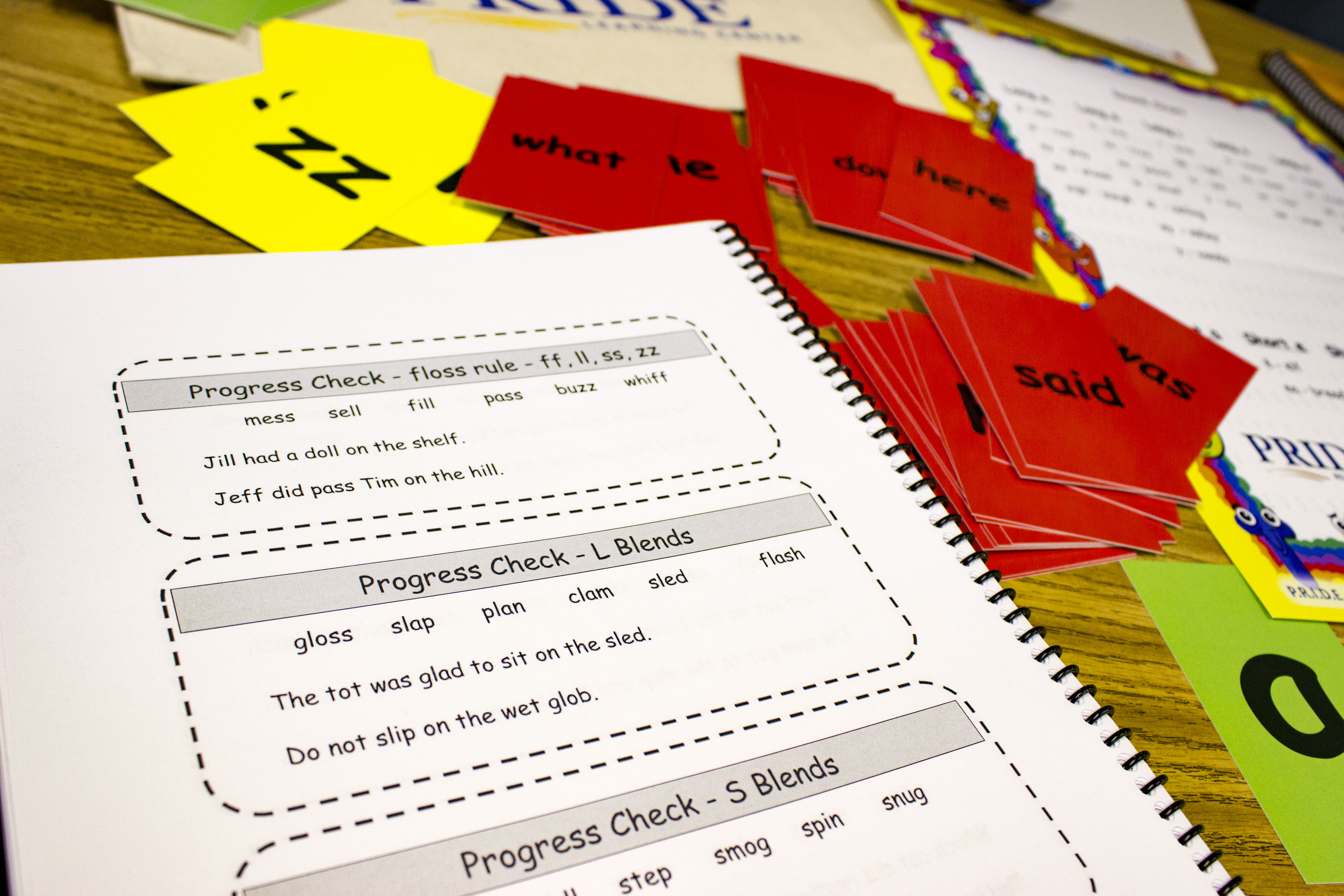
The Orton-Gillingham approach is the “grandmother” dyslexia tutoring program from which many others are derived. It was developed in the 1930s and 1940s by neurologist Samuel Orton and linguists June Orton and Anna Gillingham. Together they developed this amazing way of teaching the structure of letter-sound correspondences, using a multi-sensory method. A dyslexia tutor that is trained in Orton-Gillingham will be able to tutor your child in reading, writing, spelling and comprehension strategies correctly. If you are unable to find a dyslexia tutor trained in Orton-Gillingham, you can always hire a tutor that you like and hand them an Orton-Gillingham tutoring program that they can use with your child.
Orton-Gillingham tutoring programs:
The PRIDE Reading Program is a multisensory, Orton-Gillingham curriculum for tutoring reading, writing, spelling and comprehension. It is taught in a step-by-step progression using an easy to follow On-Line Teaching Guide that is heavily scripted out. Because it is so easy to follow the script and it also comes with online demonstrations on how to teach each step, tutors with little or no experience with Orton-Gillingham can implement it quite easily.
The Barton Reading Program is a teaching method based on the Orton-Gillingham approach. It comes with videos that explain how to teach each lesson. It is easy to learn this system and easy to teach it.
The All About Learning has an All About Reading Program and an All About Spelling Program. These programs offer intense reading and spelling lessons utilizing the Orton-Gillingham methodology. They are both highly interactive multi-sensory programs that are scripted and illustrated and easy to follow.
Use 1:1

Dyslexia tutoring must be delivered 1:1 for your child to progress the most. Keep in mind that the dyslexic student is behind his or her classmates and must make more progress than they do or catch-up will never happen. If your child is far behind, he or she must make a huge leap to catch up. Those that never make that leap might very well stay behind forever. In a 1:1 lesson, the dyslexia tutor will customize the program to fit your child. The tutor will slow down, repeat, speed up or change the pace as needed. In a group setting, the tutor has to shoot for the middle of the group, so if your child is slower than the rest they will be forced to move too quickly and the information will not “stick.” If your child needs to move faster than the group but is forced to slow down to stay together, your child will be bored to death. Being bored will result in a lack of motivation and also ignites difficult behavior. Some really great 1:1 dyslexia tutoring centers are:
Lindamood Bell is a learning approach that can help students who struggle with reading and other learning issues. It offers 1:1 instruction at private learning centers throughout the world.
PRIDE Learning Center employs the Orton-Gillingham, multisensory approach to reading, writing, spelling and comprehension. PRIDE will send a trained dyslexia tutor to your home, work, school or library. They also run many Orton-Gillingham summer camp programs throughout the United States. Their dyslexia tutors are background checked, have strong backgrounds in special education and are warm, nurturing instructors trained to implement the PRIDE Reading Program.
Your child with dyslexia will face many challenges in school at various times. By being a loving and pro-active parent and getting your child into the right program with the right kind of a dyslexia tutor will really benefit your child’s self-esteem, love of learning and academic success.
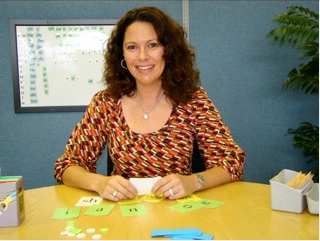
Karina Richland, M.A., developed the PRIDE Reading Program, an Orton-Gillingham program for struggling readers, based on her extensive experience working with children with learning differences over the past 30 years. She has been a teacher, educational consultant and the Executive Director of PRIDE Learning Centers in Southern California. Please feel free to email her with any questions at info@pridelearningcenter.com.
Page 3 of 35«12345...102030...»Last » 
